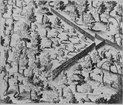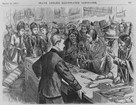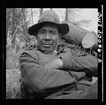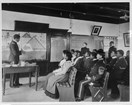The first three centuries of historic contact between Indians, Europeans, and Africans in what is today the Northeastern United States shaped the national experience of the American people. These selections from the theme study, "Historic Contact: Early Relations Between Indian People and Colonists in Northeastern North America, 1524-1783" by Robert S. Grumet (1992) provide an overview of the contact period in the Northeast.
-
Article 1: Historic Contact in the Northeast: Introduction

The first three centuries of historic contact between Indians, Europeans, and Africans in what is today the Northeastern United States shaped the national experience of the American people. Read more
-
Article 2: Historic Contact in the Northeast: Geographical Data

As many as 250,000 Algonquian, Iroquoian, or Siouian-speaking descendants of people who had first come to North Atlantic shores at least 11 millennia earlier were living on lands within what are now 14 states and the District of Columbia in the US northeast when Western Europeans began sailing to the area with some regularity during the last decade of the 15th-century. Read more
-
Article 3: Historic Contact in the Northeast: Part I

People, it seems, have always been fascinated by contact. The very idea of it conjures up images of exotic places, curious customs, and historic events. Perhaps the source of this fascination lies in the fact that, at its most basic level, contact is the story of encounters between strangers. Everyone knows about strangers. … Allies or adversaries, they provide otherwise unobtainable goods and services. Read more
-
Article 4: Historic Contact in the Northeast: Part II

Indian people generally have regarded the story of contact as parable and prelude. Drawing from their own traditions, many Indian commentators have seen enduring themes of conflict and cooperation enacted in contact events. Near all trace the origin of present conditions to contacts beginning 500 years ago. Read more
-
Article 5: Historic Contact in the Northeast: Part III

Unable to completely determine the scope or impact of contact developments, natives and newcomers alike struggled to adapt themselves to changing and uncertain conditions. Forced to adjust to the realities of their situation, Indians, Europeans, and Africans continually moved tools, goods, and ideas back and forth across cultural divides crisscrossing the region. Read more
-
Article 6: Understanding Northeastern Contact Part I

The national significance of the story of this encounter is well known and widely appreciated. Scholars sifting through masses of written, architectural, ethnographic, archaeological, and other evidence have studied nearly every aspect of contact. Results of recent research have been particularly productive. Despite these efforts, the overall record of contact in the region remains tantalizingly incomplete. Read more
-
Article 7: Understanding Northeastern Contact Part II

Contact changed very nearly every aspect of life in the North Atlantic world. Collectively, these changes represented only the most recent of a long chain of events that had transformed life on both sides of the Atlantic in revolutionary ways since the 14th-century. These changes neither occurred overnight nor did they unfold in orderly predictable ways. Instead, they were the results of complex processes whose impacts were felt in different ways by different people. Read more
-
Article 8: Understanding Northeastern Contact Part III

These changes occurred as demographic shifts of unprecedented size and scope transfigured the Atlantic community. The already mentioned movement of millions of Europeans and Africans to the Northeast was part of a more massive series of migrations that began on or about the time of the first trans-Atlantic contacts. Epidemic contagions spread by migrants killed hundreds of thousands of people on both sides of the Atlantic. Read more
-
Article 9: Understanding Northeastern Contact Part IV

Wherever they moved, newcomers struggled with Indians and each other for land and what it provided. Indian communities such as the Mohawk and other Iroquois nations anxious to maintain secure borders and adequate sources of supplies created buffer-zones around their heartlands by driving away or incorporating neighboring tribes. No less concerned with political and economic security, provincial authorities tried to obtain all the territory they could acquire. Read more
-
Article 10: Understanding Northeastern Contact Part V

No matter how deeds worked, few colonists found Indians eager to sign papers surrendering their birthrights. Although most Indian people probably did not completely appreciate the full consequences of the first sales, they soon established creative misunderstandings with colonists interested in acquiring their lands. Even after establishing this relationship, most Indian people initially refused to sell all but the smallest portions of ancestral domains. Read more
-
Article 11: Understanding Northeastern Contact Part VI

Modern studies of the contact period no longer solely concentrate on settlers. Writers of early American history traditionally portrayed Indian people as bit players in the colonial drama. New studies are moving Indians from the periphery of contact to center stage. By depicting Indians as active participants in contact rather than passive recipients, we gain a better understanding of American history. Read more
-
Article 12: Historic Contact: References
Contact in the Northeast selected bibliography Read more
